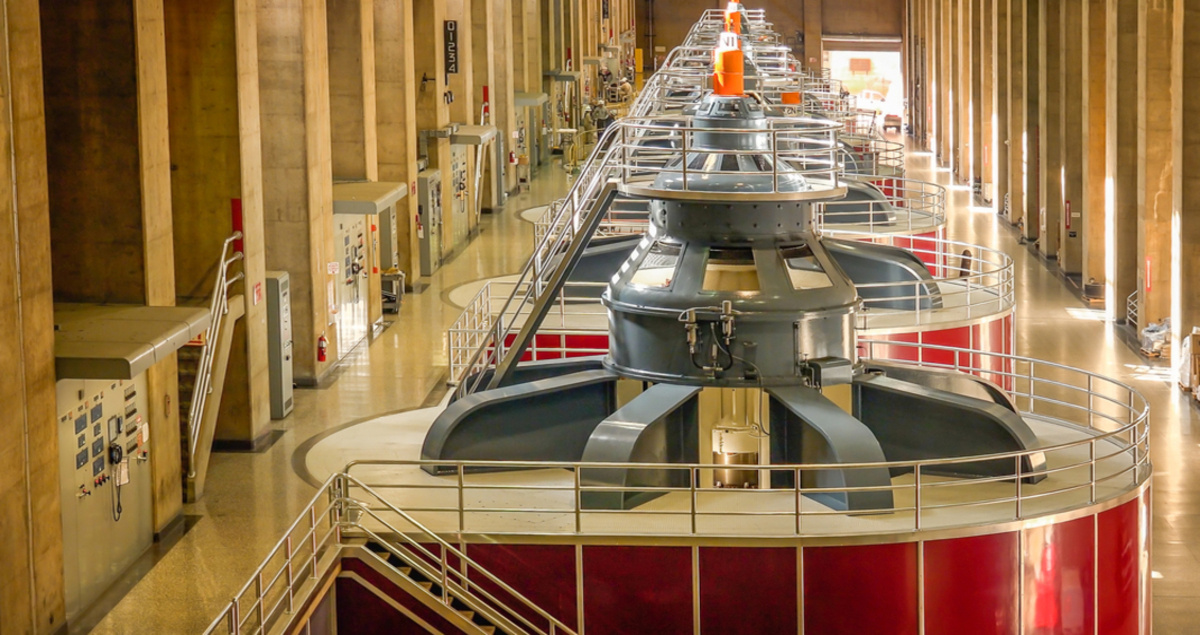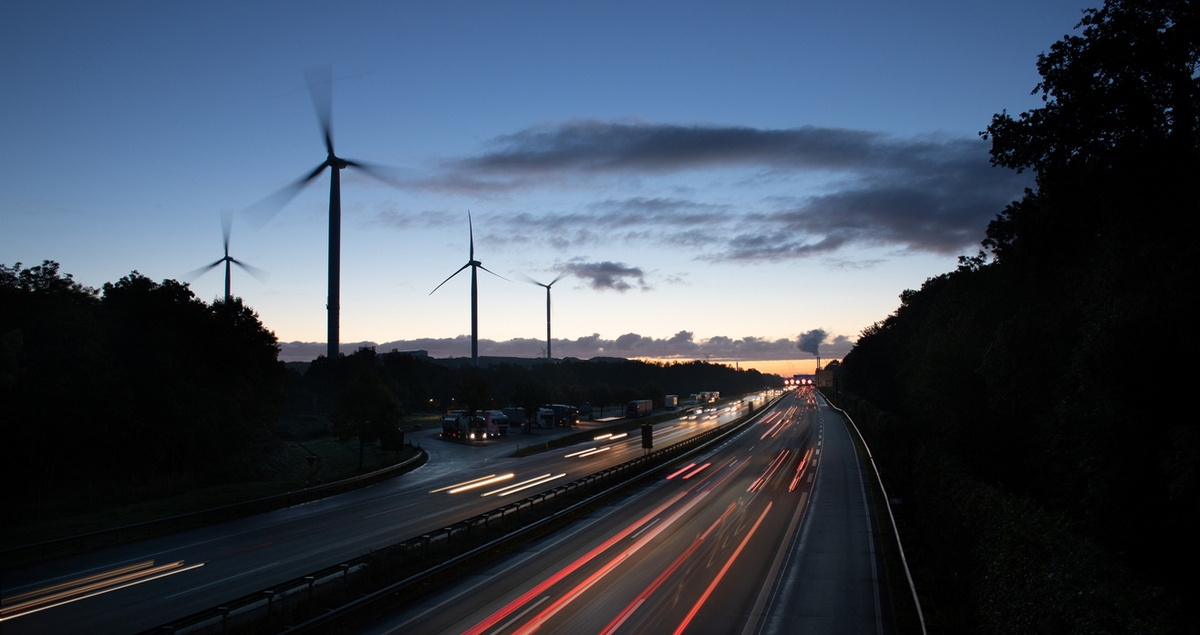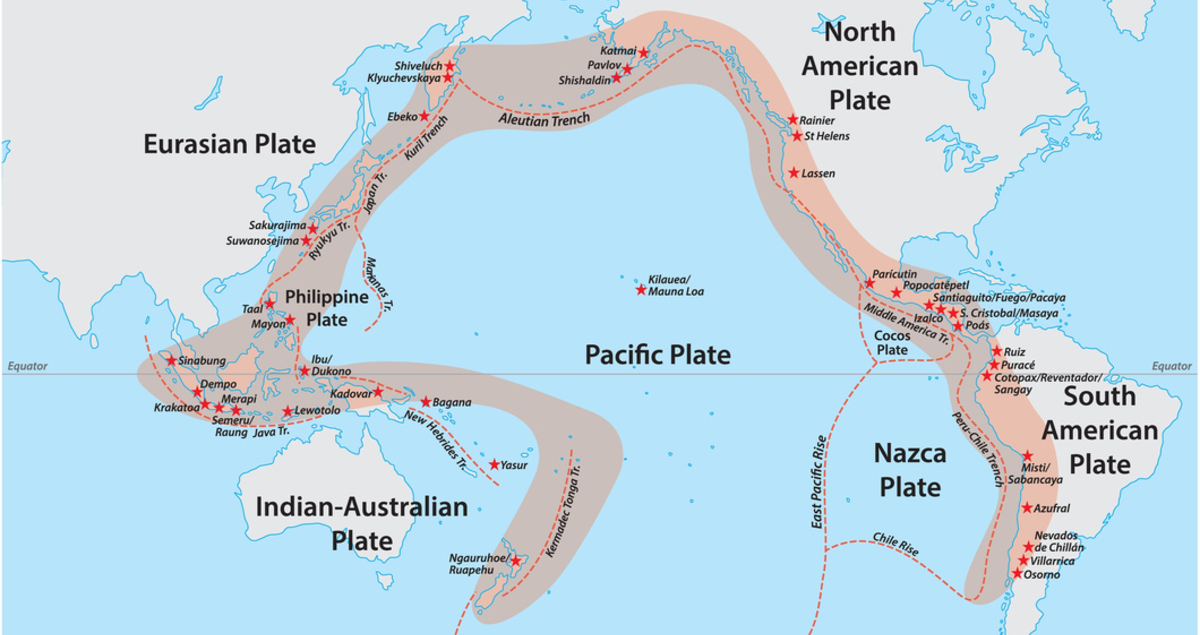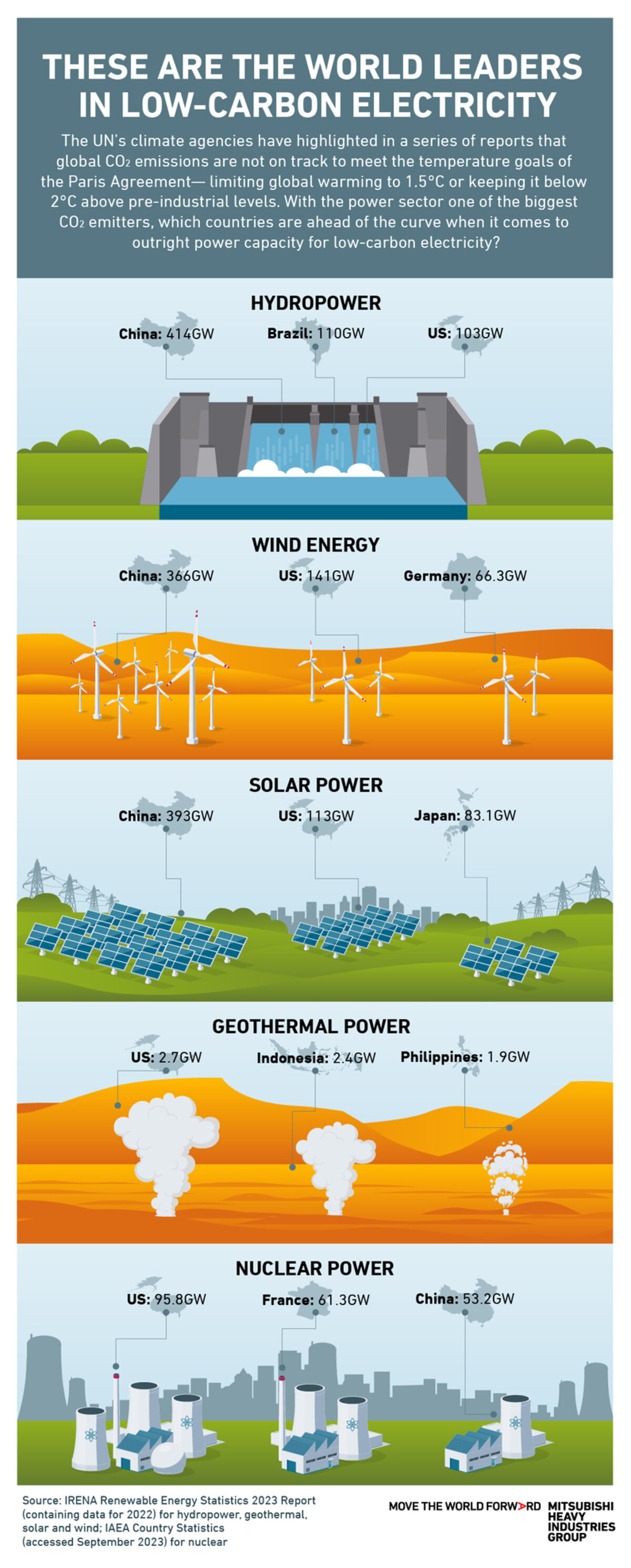Low-carbon electricity: which countries are leading the world?

When world leaders come together at COP28 in Dubai this November, their low-carbon credentials will be under intense scrutiny.
The Climate Action Tracker shows that, as of September 2023, no single country’s efforts are in line with reaching the Paris Agreement’s target of limiting global warming to 1.5°C above pre-industrial levels. With the electricity sector one of the biggest sources of CO₂ emissions, which countries are leading the field when it comes to low-carbon electricity? Some of the answers may surprise you.
Hydropower
Hydroelectricity is one of the oldest forms of energy generation - going back to water mills used to grind wheat into flour. The world leader in hydroelectric power in 2022 was China, according to data from the International Renewable Energy Agency (IRENA).
With a generation capacity of 414GW, it made up around 30% of the world’s total hydro capacity. But despite continued political and public investment focus, a diminishing number of suitable sites and concerns over the environmental impact of such large projects are expected to slow further expansion. However, as part of its Belt and Road Initiative, China has become an important international investor in hydroelectricity for developing economies.
IRENA's data shows Brazil in second place with 110GW, and the US in third with 103GW capacity as of 2022. One of the earliest adopters of hydroelectricity in the world, the US, has recently enshrined its critical role in a decarbonized grid infrastructure with the Inflation Reduction Act (IRA).

Wind energy
China also has the largest installed capacity of wind power, amounting to 366GW last year, according to IRENA. In 2022, it invested $109 billion in new capacity, overtaking the US and Europe combined. A new report from Global Energy Monitor attributes China’s accelerated adoption of renewables to a mix of government subsidies and pressure on provincial governments and energy companies to speed up the decarbonization of energy.
China’s closest rival is the US, with 141GW capacity in 2022. Wind is now the largest source of renewable electricity generation in the United States, making up 10% of the country's electricity and continuing to grow at pace.
Germany follows in third place with 66GW. After a recent dip in wind farm developments, the German government has just set more ambitious targets for wind energy, which may go some way towards winning over investors, speeding up licensing and resolving the dearth of available land.

Solar power
A similar picture emerges for solar power generation, with China in the lead (393GW) and the US in second place (113GW). Their closest rival may be slightly unexpected, though: Japan had 83GW of solar power in 2022, according to the IRENA data.
In the wake of the Fukushima Daiichi nuclear disaster and the climate crisis, Japan’s government made solar energy expansion a priority. Since then, the country has evolved into one of the largest consumers of solar energy in the world. As a mountainous island nation with limited space for on-shore power generation, Japan was also among the first countries to use floating solar panels.

Geothermal energy
Tapping into the heat stored beneath the surface of our planet provides a constant source of low-carbon, renewable energy. But it is not readily available everywhere. The world leader in geothermal energy is the US, with 2.7GW.
However, nearly 30% of the world’s geothermal capacity is deployed in just two countries in Southeast Asia: Indonesia (2.4GW) and the Philippines (1.9GW). Both are located near the “Ring of Fire” volcanic zone in the Pacific Ocean where geothermal potential is high. Experts expect these and other nearby countries to expand their geothermal capacity to meet decarbonization goals in the coming years.

Nuclear power
Nuclear energy gained popularity in the 1970s but faced setbacks due to a series of accidents in the 1980s and 2000s. Against the backdrop of the energy crisis and the net zero transition, nuclear power plants have been making a comeback as cost-effective, dispatchable and low-carbon electricity sources. This has been supported by new technology developments and improved reactor safety.
According to the International Atomic Energy Agency, the US currently has the largest installed base of nuclear power plants (96GW), followed by France (61GW) and China (53GW). However, the balance could soon swing towards China, which has 22GW of capacity under construction and is expected to have the world’s largest nuclear reactor fleet by 2030.
To reduce global warming and put the world on a more sustainable footing, world leaders in renewable electricity have a major role to play in building more low-carbon capacity and supporting less advanced players to get on track for 2050.
![]()
Learn more about nuclear power’s evolution in MHI’s latest whitepaper:The global nuclear moment: versatile energy source for net zero





